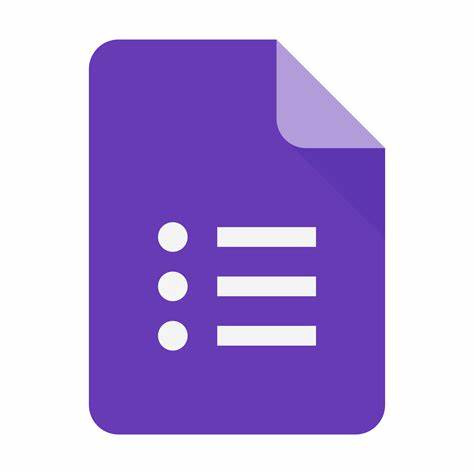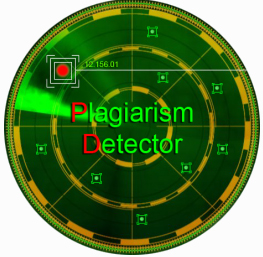- Focus and Scope
- Section Policies
- Peer Review Process
- Open Access Policy
- Archiving
- Publication Frequency
- Plagiarism Check
- Publication Ethics and Malpractice Statement
- Retraction
- Plagiarism Policy
- References Management
Focus and Scope
Jurnal Teknoinfo is a periodical journal of scientific publication of the results of studies and original research in the science of Informatics Engineering. Jurnal Teknoinfo was built with the aim to expand and create innovation concepts, theories, paradigms, perspectives and methodologies in the sciences of Informatics Engineering. The articles published in the Jurnal Teknoinfo can be the result of conceptual thinking, ideas, innovation, creativity, best practices, book review and research results that have been done.
The study of other sciences that examine topics related to Informatics Engineering is not limited to:
- Mobile Application,
- Technopreneur,
- Cloud Computing,
- Customer Relationship Management,
- Database Management,
- Web Application,
- Semantic,
- E-Learning,
- Game Development,
- Multimedia Application,
- Industrial Engineering,
- Cluster Computing,
- Intelligent System,
- Data Mining,
- Expert System,
- Software Engineering,
- Operating System,
- Data Center,
- Bioinformatics,
- Network and Security,
- Computer Network,
- Human Computer Interaction,
- Computer Vision,
- Decision Support System,
- Neural Network,
- Paralel Processing,
- Animation,
- Computer Graphic,
- Information Security.
Section Policies
Articles
Peer Review Process
- The submitted manuscript is first reviewed by an editor for initial screening to the journal aims and scope and similarity level by using the Plagiarism Checker Engine.
- These manuscripts will be sent to at least two reviewers anonymously by applying Double Blind Peer-Review.
- Reviewers' comments are then sent to the corresponding author to take the necessary actions and responses.
- The decision of the revised manuscript will be then evaluated in an editorial board meeting, the final decision of whom are sent to the corresponding author.
- The reviewers will review the submitted article that follow the guidelines and template of the journal provided.
- The review process in this journal employs a double-blind peer-review, which means that both the reviewer and author identities are concealed from the reviewers, and vice versa.
- In the review process, the article will be reviewed by at least two reviewers to ensure the quality of the article.
- In the review process, the reviewers ensure the quality of the articles of its title, abstract, discussion and conclusion. Besides, the reviewers also address the novelty and its contribution to the scientific discussion and verify the plagiarism and ethics of publication.
- The reviewer also provide feedback on whether the article is accepted, rejected or need minor or major revision.
- The time required for the manuscript review process from the reviewer's response is 3-6 weeks. The decision of the Editorial Team will be sent to the scriptwriter along with the results of the review from the Bestari Reviewer / Partner.
- Manuscripts that have been revised can be resubmitted a maximum of 6 weeks from the time the revision has been given and attach the results of the articles that have been corrected into the system for further review directly to the Reviewer.
Open Access Policy
Journal Teknoinfo provides direct open access to its content on the principle of making scientific articles freely available to the public and supporting greater global knowledge exchange. By adapting The Budapest Open Access Initiative, this journal allows readers to read, download, copy, distribute, print, search for, or link to the full text of its articles and use it for other legitimate purposes. However, the works/articles in this journal are also tied to The Creative Commons Attributions-ShareAlike 4.0 International License.
Archiving
This journal utilizes the LOCKSS system to create a distributed archiving system among participating libraries and permits those libraries to create permanent archives of the journal for purposes of preservation and restoration. More...
Publication Frequency
This journal is published twice a year (January and July)
January Edition (10 articles):
Delivery deadline: November 10th
Confirm the review results: December 10th
Published Journal: January 15th
July Edition (10 articles):
Delivery deadline: May 10th
Confirm the review results: June 10th
Published Journal: July 15th
Plagiarism Check
Plagiarism screening will be conducted by Jurnal Teknoinfo using Plagiat Detector. With the maximum allowable similarity is 25%.
Publication Ethics and Malpractice Statement
To maintain the quality of the manuscript and avoid publishing/plagiarism violations in the publishing process, the editorial board establishes the ethical scientific publication of the Jurnal Teknoinfo. This publication ethics rule applies to authors, reviewer, and editors.
Section A: Publication and authorship
- All submitted papers are subject to strict peer-review process by at least two national reviewers that are experts in the area of the particular paper.
- Review process are Double Blind Peer Review.
- The factors that are taken into account in review are relevance, soundness, significance, originality, readability and language.
- The possible decisions include acceptance, acceptance with revisions, or rejection.
- If authors are encouraged to revise and resubmit a submission, there is no guarantee that the revised submission will be accepted.
- Rejected articles will not be re-reviewed.
- The paper acceptance is constrained by such legal requirements as shall then be in force regarding libel, copyright infringement and plagiarism.
- No research can be included in more than one publication.
Section B: Authors’ responsibilities
- Authors must certify that their manuscripts are their original work.
- Authors must certify that the manuscript has not previously been published elsewhere.
- Authors must certify that the manuscript is not currently being considered for publication elsewhere.
- Authors must participate in the peer review process.
- Authors are obliged to provide retractions or corrections of mistakes.
- All Authors mentioned in the paper must have significantly contributed to the research.
- Authors must state that all data in the paper are real and authentic.
- Authors must notify the Editors of any conflicts of interest.
- Authors must identify all sources used in the creation of their manuscript.
- Authors must report any errors they discover in their published paper to the Editors.
Section C: Reviewers’ responsibilities
- Reviewers should keep all information regarding papers confidential and treat them as privileged information.
- Reviews should be conducted objectively, with no personal criticism of the author
- Reviewers should express their views clearly with supporting arguments
- Reviewers should identify relevant published work that has not been cited by the authors.
- Reviewers should also call to the Editor in Chief’s attention any substantial similarity or overlap between the manuscript under consideration and any other published paper of which they have personal knowledge.
- Reviewers should not review manuscripts in which they have conflicts of interest resulting from competitive, collaborative, or other relationships or connections with any of the authors, companies, or institutions connected to the papers.
Section D: Editors’ responsibilities
- Editors have complete responsibility and authority to reject/accept an article.
- Editors are responsible for the contents and overall quality of the publication.
- Editors should always consider the needs of the authors and the readers when attempting to improve the publication.
- Editors should guarantee the quality of the papers and the integrity of the academic record.
- Editors should publish errata pages or make corrections when needed.
- Editors should have a clear picture of a research’s funding sources.
- Editors should base their decisions solely one the papers’ importance, originality, clarity and relevance to publication’s scope.
- Editors should not reverse their decisions nor overturn the ones of previous editors without serious reason.
- Editors should preserve the anonymity of reviewers.
- Editors should ensure that all research material they publish conforms to nationally accepted ethical guidelines.
- Editors should only accept a paper when reasonably certain.
- Editors should act if they suspect misconduct, whether a paper is published or unpublished, and make all reasonable attempts to persist in obtaining a resolution to the problem.
- Editors should not reject papers based on suspicions, they should have proof of misconduct.
- Editors should not allow any conflicts of interest between staff, authors, reviewers and board members.
Retraction
The papers published in the Jurnal Teknoinfo will be consider to retract in the publication if :
- They have clear evidence that the findings are unreliable, either as a result of misconduct (e.g. data fabri-cation) or honest error (e.g. miscalculation or experimental error)
- the findings have previously been published elsewhere without proper crossreferencing, permission orjustification (i.e. cases of redundant publication)
- it constitutes plagiarism
- it reports unethical research
The mechanism of retraction follow the Retraction Guidelines of Committee on Publication Ethics (COPE) which can be accessed at https://publicationethics.org/files/retraction%20guidelines.pdf.
Plagiarism Policy
The editorial board recognises that plagiarism is not acceptable and therefore establishes the following policy stating specific actions (penalties) upon identification of plagiarism/similarities in articles submitted for publication in Jurnal Tekno Info. This journal will use Turnitin's originality checking software as the tool in detecting similarities of texts in article manuscripts and the final version of articles ready for publication. A maximum of 25% of similarities is allowed for the submitted papers. Should we find more than 25% of the similarity index, the article will be returned to the author for correction and resubmission.
Level of Plagiarism
Minor: A short section of another article is plagiarised without any significant data or idea taken from the other paper
Action: A warning is given to the authors and a request to change the text and properly cite the original article is made
Intermediate: A significant portion of a paper is plagiarised without proper citation to the original paper
Action: The submitted article is rejected and the authors are forbidden to submit further articles for one year
Severe: A significant portion of a paper is plagiarised that involves reproducing original results or ideas presented in another publication
Action: The paper is rejected and the authors are forbidden to submit further articles for five years.
It is understood that all authors are responsible for the content of their submitted paper as they all read and understand The Copyright and Licensing Terms. If a penalty is imposed for plagiarism, all authors will be subject to the same penalty.
References Management
In writing Citation and Bibliography uses the Mendeley Reference Management Software.




















